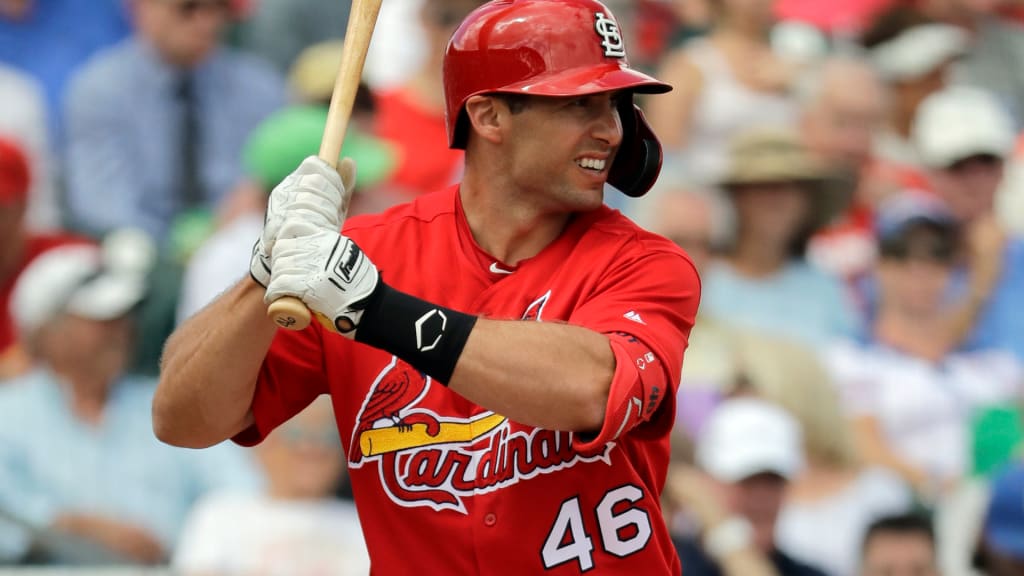
Ever since Albert Pujols left for the Angels back in December 2011, the Cardinals have been content to contend without a superstar. It has been the primary plan to have a seemingly endless succession of homegrown players put up above-average seasons, giving them production and depth up and down the roster without needing any specific player to stand out as a star, and then supplement them with trades and mid-level free-agent signings as needed. The idea was that if you didn’t necessarily need greatness if you were simply good everywhere. It was as if when they were spurned by Pujols, the Cardinals decided fine … we don’t need stars anyway.
For a while, this worked, but in each of the past three seasons, with the Cubs and Brewers powering up in the National League Central and St. Louis mostly staying the course, the Cardinals have fallen short. And now, facing potentially their longest postseason drought in nearly 25 years, they’ve finally switched strategies and locked down that superstar.
The Cardinals’ extension of Paul Goldschmidt, reportedly for five years and $130 million, ensures they keep the lineup centerpiece they’ve been lacking since Pujols left for years to come. Adding the contract to the $14.5 million it's paying him this season, St. Louis is getting Goldschmidt’s age 31-36 seasons for $144.5 million; he’ll turn 37 in the final year of the contract. Goldschmidt’s career started relatively late for a player of his caliber: He has only played in 27 more games than Mike Trout despite being four years older. That doesn’t make him any younger, of course, but it did both maximize his desire to get this big payday while he can, and it helped the Cardinals keep the years down to a reasonable number.
It’s actually difficult to come up with a reasonable downside in this deal for the Cardinals, barring a significant injury to Goldschmidt. Comparisons with Pujols’ contract are helpful here, as well, even if you consider his contract the worst-case scenario. Pujols’ age 31-36 seasons were 2011-16, the first of which was with the Cardinals. While Pujols has not been the superstar with the Angels he was with the Cardinals, he certainly did provide them considerable value before falling off the cliff these last two seasons. In those six seasons of age 31-36, he put up a total of 19.9 bWAR, good for 3.3 WAR per season. That’s lower than you want, of course. Goldschmidt has never put up a single season number that low, and because the Angels back-loaded Pujols’ contract, Goldschmidt will cost a total of $30 million more than Pujols did from ages 31-37.
But, of course, Pujols’ contract had another five years and $175 million on it after he turned 37. And, unlike Pujols, Goldschmidt didn’t enter his age-31 season on a decline, however slight. Pujols’ OPS+ dropped every year from 2008-11; he put up a 148 OPS+ his last year in St. Louis, which is still great (and higher than Goldschmidt’s 139 in 2018), but it was the lowest of his career to that point. But Pujols has been unable to match that number any season in Los Angeles. Goldschmidt is cheaper, signed to fewer years and showing fewer signs of decline. His worst-case-Pujols scenario is highly unlikely. And we haven’t even accounted for inflation yet.
Goldschmidt, for his part, gets the security of his first big payday -- 2018 was the first season he made more than $8.875 million -- and is locked into the middle of a lineup for a team that never rebuilds or “resets its competitive window.” The Cardinals, unlike the team that just traded him, are essentially trying to win the World Series every year, and paying a player like Goldschmidt the money they’re paying him assures that’ll continue to be the case through 2024. The commitment does raise potential questions about what the Cardinals will do with Matt Carpenter after his contract expires in 2020 -- he’ll hit free agency at the age of 35, with Top 100 prospect Nolan Gorman potentially primed to take over third base not long after -- and this likely assures the Cardinals will let Marcell Ozuna become a free agent after this season. But there’s still plenty of room for maneuvering. The only players the Cardinals have assured to be on the roster in 2024 are Goldschmidt and shortstop Paul DeJong (assuming the Cardinals pick up a $12.5 million option for that year).
The Cardinals have a trove of young pitchers coming through the system, but position players, since Pujols and the late Oscar Tavares, have proven more difficult to generate internally. Superstars turn out to be tough to come by. And, as it happens, and as the Cardinals have learned, you do end up needing one. Now, at last, the Cardinals have theirs.
